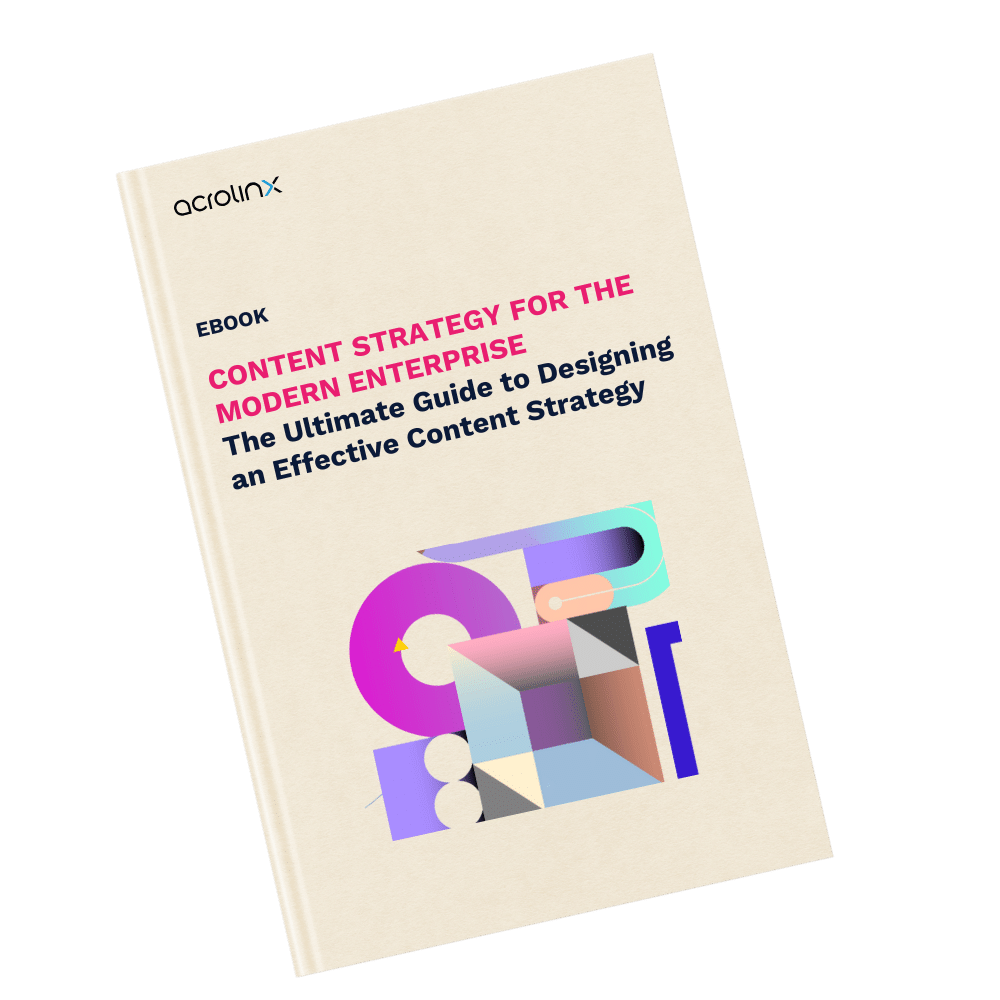Six Ways to Unify Your Content Workflow After an M&A

Companies come together through mergers and acquisitions all the time. And when they do, it’s important that they consider how to unify their content operations — so that everyone involved in creating content is aligned and working together to support the new business.
Even though it can be pretty overwhelming to bring two companies’ content together, it’s best to take a systematic approach. These six tips should help you get started.
1: Set joint content strategy goals
You first need to decide what you’re trying to achieve with your content as a combined business. And then you’ll need a strategy to support it. In the short term, your goal might be to simply communicate the merger or acquisition to your prospects and customers. Longer term, you’ll probably want to build greater awareness for your newly combined brand and generate more leads.
To achieve this, compare both companies’ content strategies and adopt the best approaches from each. Think about how to make sure the resulting strategy meets your combined business needs. For example, you’ll want to consider things like:
- Your personas and how you might need to update or combine them to reflect a potentially larger or more nuanced target audience
- The topics that’ll help those personas find solutions to the challenges they face
- If you’ll need to use additional channels to reach your expanded audience
Rather than starting from scratch, use whichever company has the more fully fleshed out strategy as your starting point. You can then make changes to adapt it for the needs of the combined business.
2: Settle on digital brand guidelines
Your company’s brand voice is how the character of your business comes through in the words you write. It’s not about what you say, but the way you say it, and the impression it makes on your audience. It’s also about using language to give your brand its own distinct and recognizable personality — one that stands out and helps you cut through and build authority.
Some companies have very distinctive brand voices. Others tend to write in more generic corporate speak. No matter where you find yourself, now is a good time to take a close look at your brand voice and see how you might adjust it to reflect your newly combined business. As with developing your content strategy, you might find that one company has a stronger voice that you want to adopt across the board. Instead, you might combine the best aspects of both brand voices or come up with something completely new.
No matter which direction you go in, it’s important to have a clearly defined brand voice that every content creator applies to your content to help create consistent customer experiences.
3: Determine your top-level messaging
The next thing you need to do is adjust your messaging for things like your company’s mission, value proposition, products or services, and key differentiators. To pull that off, you’ll need to decide if you’re adopting one company’s messaging or taking the best of both and creating something new. Whatever the case, decide on the core messages you’ll use to define your newly expanded business. Those messages should help you articulate the business to new and existing customers.
Keep in mind that these messages will ultimately need to trickle down to — or at least help shape the direction of — all of your content and communications. Some of the places where you may need to update your new messaging include:
- Any and all branded materials, including your website, blog, sales collateral, product, software UX, customer support portal, and advertising
- Your customer communications during and after the transaction
- Any media and investor outreach
Once you’ve updated the essential assets, writers and other content creators across the business can take advantage of them and try to replicate that messaging in whatever else they’re working on.
4: Assess both companies’ written content
By now it’s time to assess both company’s other legacy content and develop a plan to systematically update it as appropriate. This might include all of your technical documentation, knowledge base content, and FAQs, among other types of content.
As part of that process, you’ll want to assess the content for its overall quality and how well it aligns to your new brand and top-level messaging. Your goal should also be to assess if the content will be needed in the future and, if so, what needs to happen to make sure it’s on target to support the new brand. At the same time, try to identify which pieces of content you need to update right away versus those you can tackle over time.
This kind of assessment is tricky to do using manual methods. A better approach involves adopting a analytics-driven governance system, powered by technology to automate it. We’ll cover this more later!
5. Develop a new content management process
Now that you’ve updated all of your existing content at both organizations, it’s time to work out the processes you’ll use to create new assets. In particular, you’re going to want to look at each company’s existing processes and decide if you need to standardize and modify them to align them with your content strategy. Here are some of the types of questions you’ll want to plan for:
- How will you make sure that your content accurately reflects your company’s brand, style, and tone of voice, so it’s written clearly and concisely and is recognizable to your customers?
- What can you do to make sure your content always comes across as though you’re speaking with the same brand voice no matter who’s actually doing the writing?
- What review and approval processes will your content need to go through before publication?
These are just some of the many process-oriented questions you’ll need to work through to get everyone on the same page about creating content that meets your business goals.
6. Implement an AI-driven content governance model
Now that you’ve figured out your strategy and looked at your brand voice, messaging, content, and processes, you need to make sure everyone is working toward alignment. And while you could try to do that manually with style guides, editorial review cycles, and constant meetings, that’s really inefficient. A better approach is to build a governance process powered by analytics, and automate it with the right technology.
The first step is to refine the content strategy you’ve created and make sure it’s clear, defined, dynamic, and accessible. It should include a set of content strategy goals, processes, and metrics that align with the strategy the combined business cares about. Next, you should use analytics to identify how big of a gap you have between your goals and your content. Finding the delta between your evolving brand’s goals and what’s actually happening in your content gives you the insight to understand what assets need alignment, and by how much. These analytics also help you understand the progress you’re making toward alignment over time and how easy it is (or isn’t) to stay aligned.
Another critical part of content governance is improving the effectiveness of your new brand’s content. To do that well, you need to be able to guide your content creators and editors at the point of creation, in their content tool of choice, with meaningful editorial metrics. Those metrics should then give you visibility into how your content performs against the goals of your new strategy (by department, content type, author, editor, repository, etc.).
Finally, enlisting champions who recognize the value of content governance is also a critical part in making it successful. But it won’t be enough. You also need the right technology to help automate and enforce governance company-wide.
Unify your content workflow with Acrolinx
Bringing two large enterprises’ content operations together isn’t easy. There are lots of things to think about. And, once you have, you face the challenge of applying your decisions across both company’s content and content creation processes. Even with the best planning, this is hard to pull off.
The answer is to implement the right technology to help. A content governance platform like Acrolinx, uses AI and Natural Language Processing to automate and operationalize your content strategy. That means you can apply your new unified guidelines to all new content, make sure they’re digitized and available to writers in the tools where they create content, have visibility into your total content operation, and measure performance with very little human intervention. And for legacy content that you want to gauge for alignment with your new strategy, a governance platform acts as a quality gate. It can automatically check all the content so you get a clear picture of what content is falling short and how to fix it.
If your company is involved in a merger or acquisition and you’re responsible for combining both organization’s content operations, let’s talk so we can show you how Acrolinx can help.
Are you ready to create more content faster?
Schedule a demo to see how content governance and AI guardrails will drastically improve content quality, compliance, and efficiency.
The Acrolinx Team





